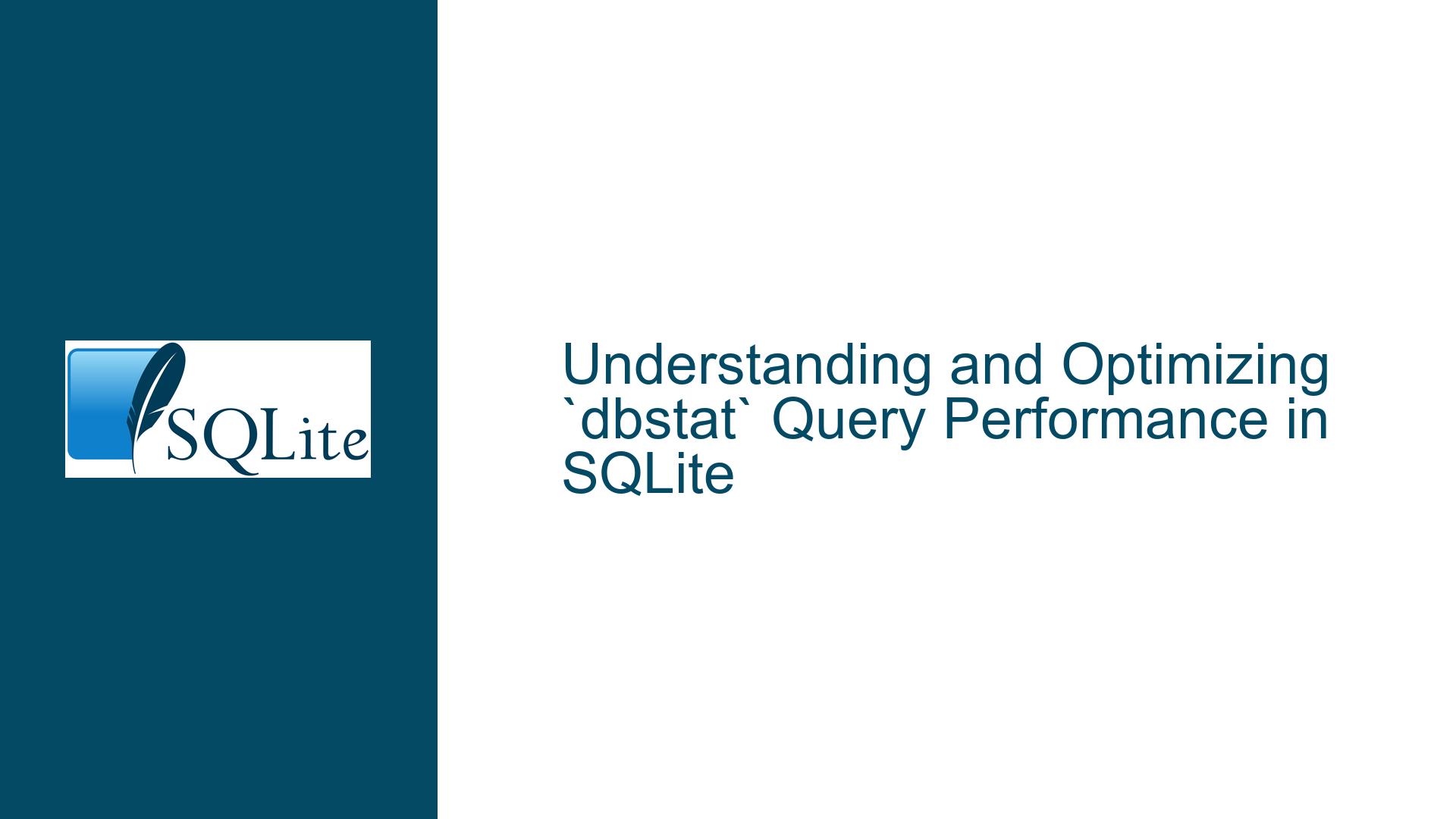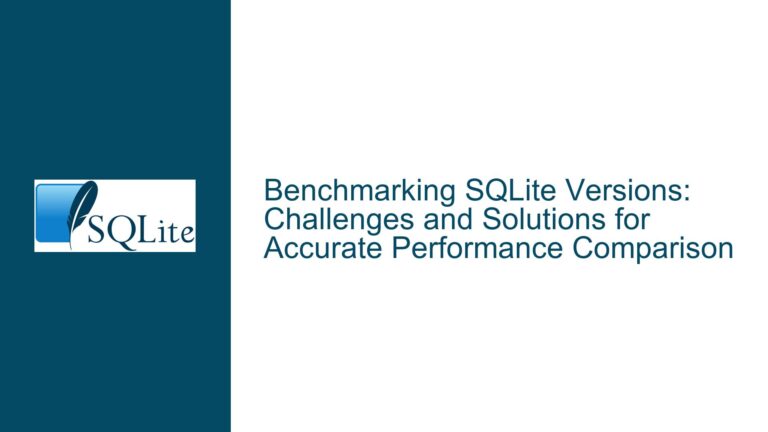Optimizing `dbstat` Query Performance in SQLite
Performance Characteristics of dbstat Queries and Their Impact on Database Operations
The dbstat virtual table in SQLite is a powerful tool for analyzing the internal structure of a database, particularly for understanding how data is stored across pages. However, as highlighted in the discussion, queries against dbstat can exhibit performance characteristics that may not be immediately intuitive. For instance, a simple query like SELECT count(*) FROM dbstat; can take a significant amount of time, especially on larger databases. This behavior raises questions about the underlying mechanics of dbstat and how it interacts with the database file.
The performance of dbstat queries is influenced by several factors, including the number of pages in the database, the storage medium (spinning disk vs. SSD), and the physical size of the database file. The discussion suggests that the time taken to execute such queries is roughly linear with respect to the number of pages. However, experiments with varying page_size values and subsequent VACUUM operations indicate that the physical size of the database file might be a more significant factor than the number of pages alone. This observation is critical because it challenges the assumption that dbstat performance is solely dependent on page count and suggests that other factors, such as file system characteristics and storage hardware, play a role.
Moreover, the discussion touches on the broader context of why one might want to use dbstat in the first place. The primary use case appears to be monitoring database fragmentation as a proxy for determining when to run VACUUM. However, the utility of VACUUM itself is called into question, particularly in modern systems where fragmentation may not have a measurable impact on performance, especially on SSDs. This raises the question of whether the overhead of running dbstat queries is justified, particularly in scenarios where the database operations are otherwise lightweight and fast.
The Role of Fragmentation and VACUUM in Modern Database Systems
Fragmentation is often cited as a reason to run VACUUM, but its actual impact on performance is debatable, particularly in the context of modern storage systems. The discussion highlights that on SSDs, the relationship between file system fragmentation and physical storage layout is largely abstracted away by the SSD firmware. This means that even if a database file appears fragmented at the file system level, the SSD’s internal mechanisms may still ensure that data is accessed efficiently. As a result, the performance benefits of VACUUM on SSDs may be negligible, and the operation could even be counterproductive by causing unnecessary wear on the drive.
On spinning disks, however, fragmentation can still have a measurable impact on performance, as sequential access patterns are generally faster than random access. In this context, VACUUM can help reorganize the database file to ensure that related data is stored contiguously, thereby improving read performance. However, the discussion also points out that the benefits of VACUUM must be weighed against the costs, including the time and processing resources required to perform the operation. For databases that are frequently updated or deleted, the overhead of running VACUUM regularly may not be justified, particularly if the database is small or the operations are infrequent.
Another consideration is the use of VACUUM for minimizing disk space usage. While VACUUM can reclaim unused space within the database file, this is only necessary if disk space is at a premium. In many cases, the free space within the database file can be reused for future operations, reducing the need for frequent VACUUM operations. The discussion suggests that VACUUM should be used judiciously, based on specific needs such as creating minimal backup files with VACUUM INTO, rather than as a routine maintenance task.
Strategies for Optimizing dbstat Usage and Database Performance
Given the performance characteristics of dbstat and the limited utility of VACUUM in many scenarios, it is important to consider alternative strategies for monitoring and optimizing database performance. One approach is to limit the scope of dbstat queries to specific tables or indices, rather than querying the entire database. This can significantly reduce the amount of work required and improve query performance. For example, instead of running SELECT count(*) FROM dbstat;, one could run a more targeted query like SELECT count(*) FROM dbstat WHERE name='table_name';.
Another strategy is to use tools and libraries that provide higher-level abstractions for analyzing database performance. For instance, the Python wrapper mentioned in the discussion offers page usage analysis and visualization capabilities that can help identify fragmentation and other performance issues without requiring direct queries against dbstat. These tools can provide more intuitive insights into database performance and help guide optimization efforts.
In addition to these technical strategies, it is also important to adopt a pragmatic approach to database maintenance. Rather than running VACUUM or dbstat queries on a fixed schedule, these operations should be triggered based on specific conditions, such as the number of changes made to the database or the observed performance of queries. This approach ensures that maintenance operations are only performed when they are likely to provide a tangible benefit, minimizing unnecessary overhead.
Finally, it is worth considering the broader context of the application and its performance requirements. In many cases, the performance of dbstat queries and the impact of fragmentation may be negligible compared to other factors, such as query optimization, indexing, and caching. By focusing on these areas, it may be possible to achieve significant performance improvements without the need for frequent VACUUM operations or extensive use of dbstat.
In conclusion, while dbstat and VACUUM are valuable tools for understanding and optimizing SQLite databases, their use should be guided by a clear understanding of their performance characteristics and the specific needs of the application. By adopting targeted query strategies, leveraging higher-level analysis tools, and taking a pragmatic approach to database maintenance, it is possible to achieve optimal performance without unnecessary overhead.






